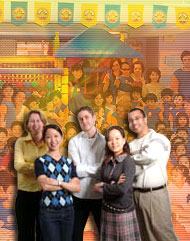When it comes to the inclusion of fun activities in the classroom, there is an old English saying that goes, “All work and no play makes Jack a dull boy.”
I am sure the same could be said for Jill too. Most people still assume that children can only learn in a serious and quiet atmosphere. Even teachers who incorporate fun into a lesson are deemed unprofessional. Is there any evidence that suggest that learning should be fun?
There is quite a lot of
rather convincing research suggesting the benefits of utilizing fun and interesting games and activities. Even neurologists suggest that fun actually increases learning, by increasing dopamine and oxygen in the brain. In fact, research into the utilization of nontraditional student centered teaching methods, using games and interactive game like activities, in ESL teaching has shown to be effective in both adults and children.
The obvious inference one can take from the above is that it would be beneficial to include them in your class. That’s all well and good you may say, but with such a demanding academic curriculum, how can you manage to implement that and finish the set work in the allotted time? It certainly presents a challenge; there is no doubt about it.
It’s important to point out that when speaking about fun games and activities, I am speaking of controlled learner focused activities. Activities that resemble a free for all, or lack set learning objectives and goals are certainly not on the agenda here. I can list all the advantages for children such as an increase in children’s active participation, sustainable interest in English, scientific research noting that children maintain concentration for longer and learn more, when they are interested, actively involved and having fun. Still I am probably preaching to the converted, and stating any of this doesn’t make its application in class any easier.
So the big question is how? How do we manage to fit activities into our tight schedules? The answer in specifics varies on your preferences and teaching style, but generically speaking it is creative multitask teaching, and making sure your activity relates to and covers your academic demands. Accordingly word puzzles, stop gap activities, board races, memorization games, writing relay games, etc. can all be effective in this way. But why stop there?
Using a bit of imagination and creativity, who knows what interesting
activity you can come up with.
